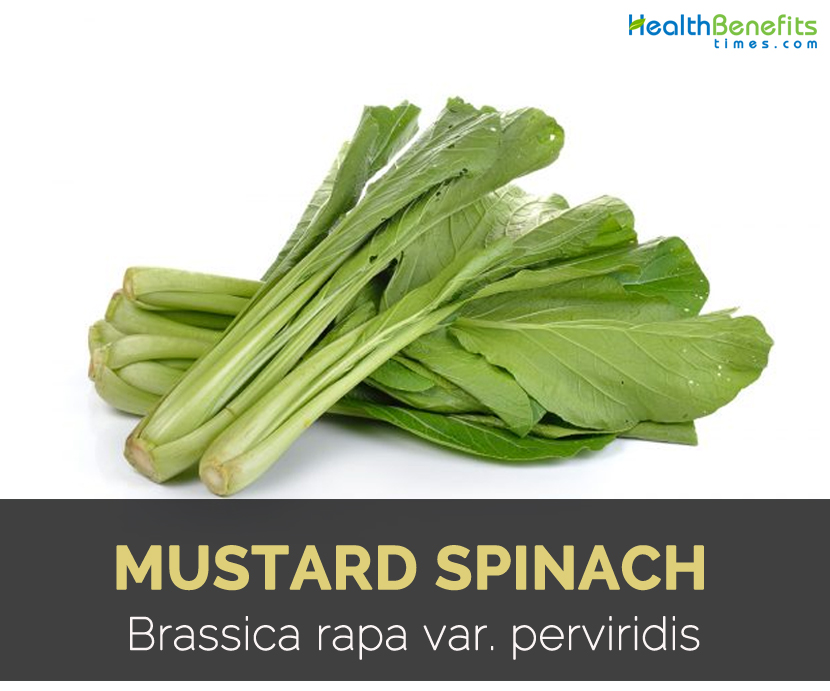Japanese mustard spinach scientifically known as Brassica rapa var. pervirdis is a leaf vegetable. Commercially, it is cultivated in Taiwan and Japan. Also known as komatsuna, the name is derived from Japanese komatsuna which refers to the greens of Komatsu, Komatsugawa village where it was cultivated heavily during Edo period. Leafy greens are cooked or also consumed fresh. It is pickled, stir-fried, boiled, added to soups or used in salads. It is regarded as an excellent source of calcium. Komatsuna leaves could be consumed at any stage of its growth. In mature plant, they are dark green having slender light green stalks which are about 30 centimeters long and 18 cm wide. It is found in spring and autumn and it could not sustain extreme heat and cold for long time period.
Culinary uses
- Young leaves are added to salads or stir-fries.
- Leaves (from older plants) can be simmered, steamed, braised, stir-fried and pickled in salt.
References:
https://npgsweb.ars-grin.gov/gringlobal/taxonomydetail.aspx?id=7687
https://en.wikipedia.org/wiki/Komatsuna
https://homeguides.sfgate.com/harvest-mustard-spinach-continue-growing-75835.html
https://healthyeating.sfgate.com/nutrient-listing-mustard-spinach-vs-spinach-3672.html
https://www.cooksinfo.com/japanese-mustard-spinach
http://www.urbancultivator.net/learn-about-komatsuna/
Comments
| Mustard spinach Quick Facts | |
|---|---|
| Name: | Mustard spinach |
| Scientific Name: | Brassica rapa var. perviridis |
| Colors | Dark-green, glossy |
| Shapes | Oblong |
| Taste | Mild |
| Calories | 33 Kcal./cup |
| Major nutrients | Vitamin C (216.67%) Vitamin A (106.00%) Vitamin B9 (59.50%) Calcium (31.50%) Iron (28.13%) |
| Name | Mustard spinach |
|---|---|
| Scientific Name | Brassica rapa var. perviridis |
| Name in Other Languages | English: kabuna, spinach mustard, tendergreen, turnip greens, zairainatane; Dutch: raapsteeltjes; French: moutarde épinard; German: Mosterdspinat, Senfspinat; Italian: senape spinacio; Japanese Rōmaji: komatsuna; Spanish: mostaza espinaca |
| Growing Climate | Mild |
| Plant Size | 8 to 14 inches (20 to 35 cm) |
| Leaf shape and color | Dark-green, glossy and oblong |
| Leaf size | 7 inches (18 cm) wide by 12 inches (30 cm) long |
| Stalk | Thin, light-green |
| Taste | Mild |
| Major Nutritions | Vitamin C (Ascorbic acid) 195 mg (216.67%) Vitamin A, RAE 742 µg (106.00%) Vitamin B9 (Folate) 238 µg (59.50%) Calcium, Ca 315 mg (31.50%) Iron, Fe 2.25 mg (28.13%) Manganese, Mn 0.61 mg (26.52%) Vitamin B6 (Pyridoxine) 0.229 mg (17.62%) Potassium, K 674 mg (14.34%) Copper, Cu 0.113 mg (12.56%) Total dietary Fiber 4.2 g (11.05%) |
| Calories in 1 cup, chopped (150 g) | 33 Kcal. |



